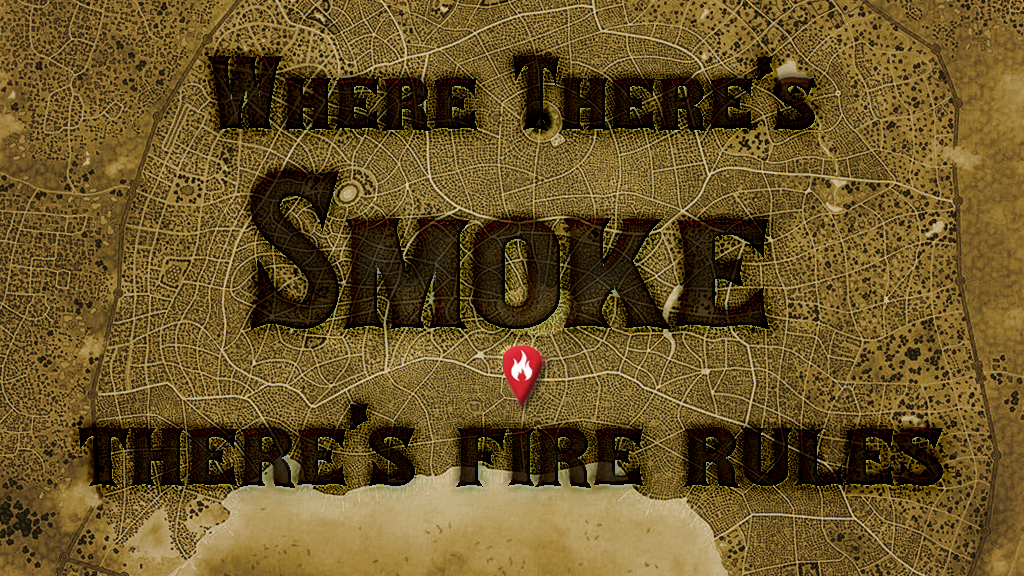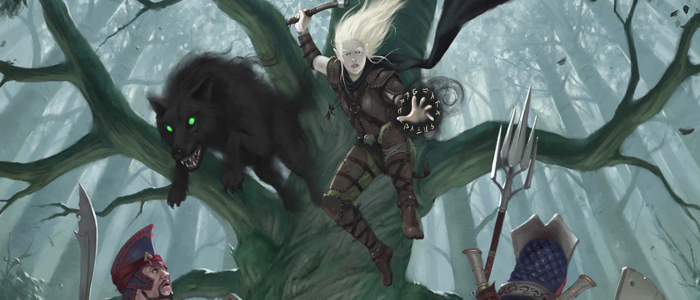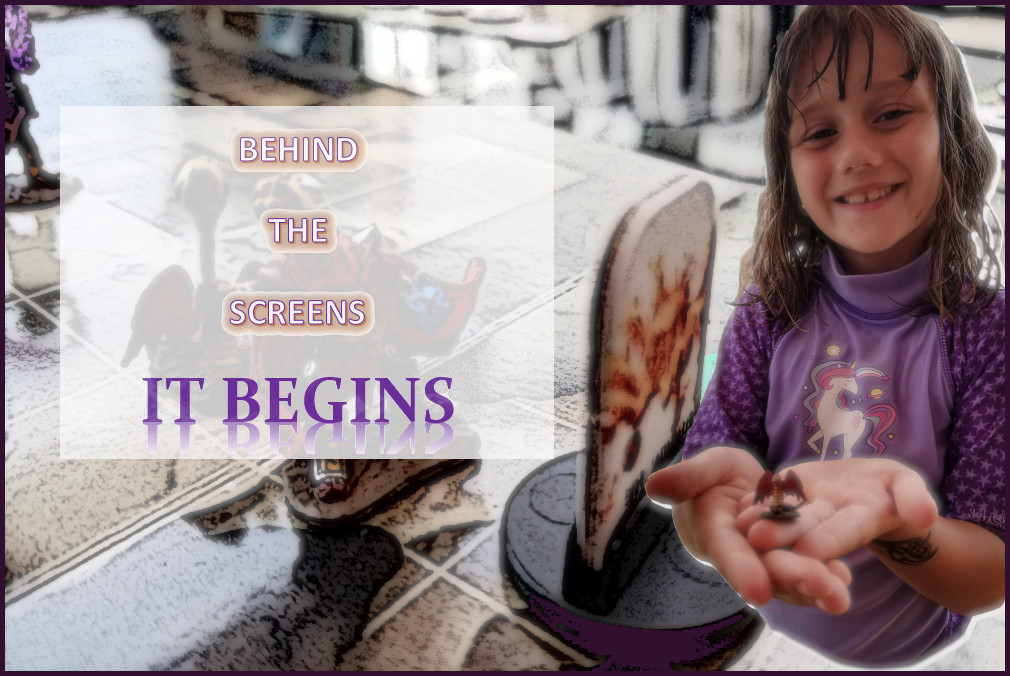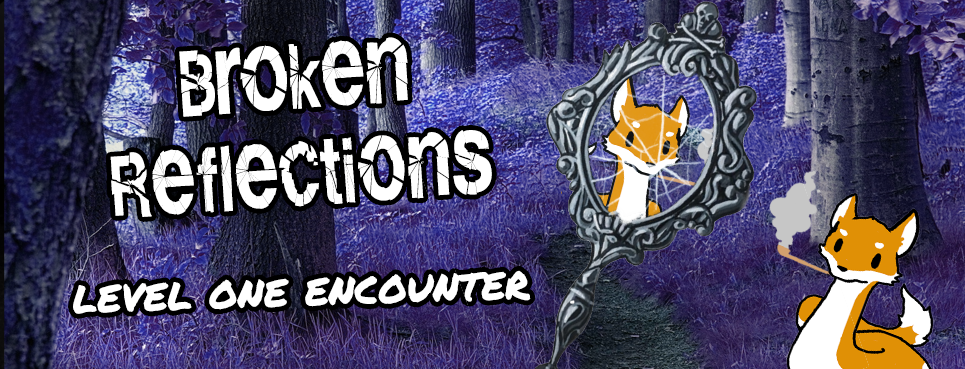The Pathfinder 2e rules for Environmental Damage are pretty scant. That’s not a bad thing, as it allows both home games and campaign authors to set the damage of their environments to suit the levels and intensity of the encounters in which they are run. But what if the disaster is one that your party will encounter multiple times throughout a campaign? Then you might want to establish the rules early as I’ve done in my emergency response team home game “Where There’s Smoke”.
Important Note: Even with these rules, the countless variables of any disaster make it impossible to make one clear-cut set of rules for any fire. These are guidelines that should be adjusted to account for the circumstances of the disaster! Even during my first fire-related emergency in the campaign, I used multiple additional hazards that added to the complexity of the encounter! The fire builds off the existing Town Hall Fire hazard rules from Age of Ashes, but expands upon them significantly to account for different blazes based on the variants you can apply to the hazard below.
Fire [Hazard 1]
Complex, Environmental, Fire
Stealth –10; Initiative Modifier is +0
Description A single instance of fire ranging from 4-squares to 9-squares that begins burning and spreads on each of its turns.
Disable Eliminating the hazard requires dousing the flames. Water typically clears a 5-foot square if the amount is smell (such as that from create water or hydraulic push). Larger amounts of water, such as a full bucket, typically dousing 2 contiguous squares of adjacent fire. Throwing a bucket of water on flames requires an Interact action. A waterskin doesn’t contain enough water to put out even 1 square of fire. Cold can also put out fire, but only if the cold can affect an area; cold is usually less effective than water, so a frost vial typically puts out 1 square of fire, and a ray of frost is ineffective. Other abilities and actions including but not limited to spells and attacks that deal fire damage, Athletics, and Survival checks can also put out one square of fire as an Attack action (requiring you to hit an AC of 5) or 2-action Interact action (against a DC of 10). On a critical failure, you can spread the flame instead of dousing it, especially if you are using survival to smother a blaze or fire spells to try to consume the fire. Specialized equipment such as the water pump from a Grodair Firetruck can douse entire cones of flames.
Routine On its turn, the fire spreads into a number of additional squares of flammable material equal to half the number of squares the fire currently occupies, with a minimum of 1 square. You determine the squares the fire spreads into—typically those with the most flammable materials. Any creature that ends its turn next to the flames takes 1d6 fire damage, and any creature within the flames takes 3d6 fire damage. Both of these have a DC 17 basic Reflex save. A creature can take damage from flames only once per round.
Additional Hazards [Variable]
Backdraft: A ongoing fire event being exposed to fresh air will often explode outward as it spreads violently. A backdraft is considered a separate hazard on the other side of an obstacle, often a door, that can be detected with a Perception check against an easy DC, often by checking the temperature of the surface of the object. It can be prevented using Thievery or Athletics to create a safe vent point as a Disable check. When triggered, a backdraft erupts in a 5-foot cone that deals fire damage as though the creature ended its turn inside the fire and bludgeoning damage as though the creature ended its turn adjacent to the fire (Reflex half for all damage); Increase the size of the conical blast by 5 feet for every 5 levels of the Hazard. Each creature who fails their reflex save is forcefully moved 5-feet beyond the edge of the cone; On a critical failure, they are knocked prone. The cone ignites any extremely flammable or combustible material.
Combustible Material: Combustible material, whether alchemical reagents or dust, burns as quickly as extremely flammable material (see below), but explodes when ignited dealing inside damage to all creatures within or adjacent to the combustible material (Basic Reflex save) and are subjected to being pushed away from the center of the explosion as per the rules for Backdraft. Unlike extremely flammable material, combustible material does not continue to burn after it explodes, unless there is also extremely flammable material in the same squares.
Extremely Flammable Material: Extremely flammable material does not count against the number of squares the fire can spread, allowing a spread very quickly. Creatures caught in the blaze of extremely flammable material must attempt a reflex save immediately as though they ended their turn caught within the flames.
Fire Intensity: Fuel, ventilation, and even magic can all influence the intensity of a fire. In many cases, a GM may just want to challenge their players with more difficult flames. The following guidelines can adjust a fire’s statistics. These include the damage the fire deals, the DC to avoid taking damage, the maximum, and the suggested starting size. Note that inside damage will also adjust the damage dealt by backdraft and combustable material.
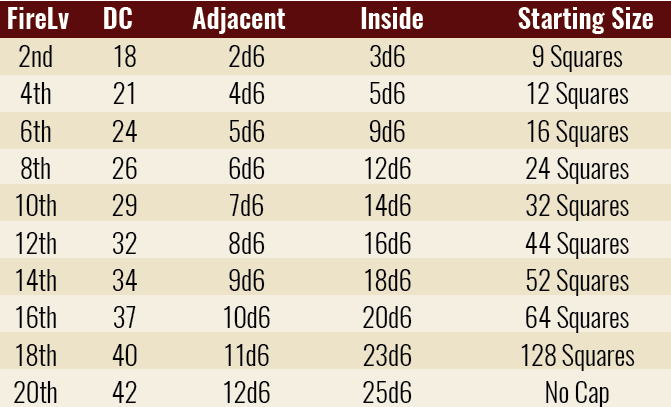
Smoke: Smoke can take from 4 to 6 rounds to fill a space, dealing 1d6 nonlethal damage to all creatures in the space. Toxic materials can increase this at the same rate as fire intensity, in addition to imparting conditions such as dazzled. After 1 minute of burning, intense smoke will choke the characters within or adjacent to the fire, forcing them to hold their breath or suffocate. A wet rag tied around one’s face will halve the damage and can lessen certain conditions. A filtered mask or the air bubble spell can protect a firefighter from the effects of smoke.
Unusual Fires: Alchemical and magically influenced fires can dramatically adjust the variables of a rescue operation, imparting conditions or even dealing some of its damage as a different type to creatures unfortunate enough to find themselves surrounded by these fires. The deadliest of these chemically or magically enhanced fires causes the burning condition to anyone who fails their reflex save against the hazard, even if they are wearing fire-resistant clothing, dealing persistent damage to the creature equal to the damage they’d take if they were adjacent to the fire. Any action that would douse a fire counts as receiving helpful aid for the purposes of ending the condition.
And that’s the basics of the versatile “fire” hazard. Next time on Fox’s Cunning, we will go ahead and look at the different tools you can use to fight the fire!

